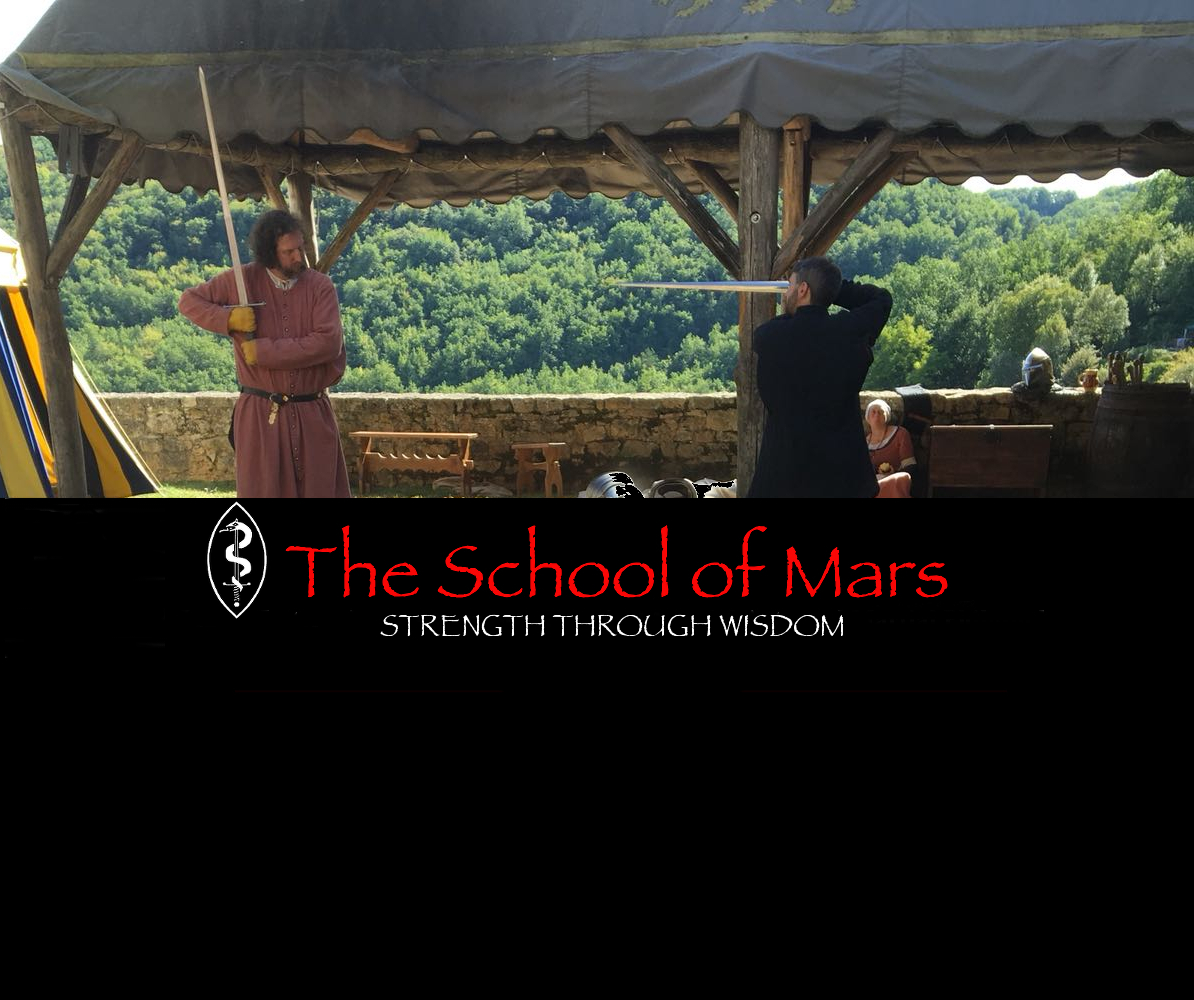It’s quite common to come across people in the historical combat community refering to masters or teachings by nationality. I do it myself sometimes, as it can be a convenient shorthand, such as when I refer to Fiore as our primary medieval ‘Italian’ source, or to the many ‘German’ masters who align themselves with the teachings of Johannes Liechtenauer.
However, I also see these designations frequently used in ways that, in my view, are at best artificial, and at worst just plain inaccurate and unhelpful. Such cases are when I hear fellow practitioners refer to the techniques of a given master (or group of masters) as representing a ‘German’ or ‘English’ style of combat or, worse, proclaiming the superiority of one nationally-termed style over another.
I realise it’s sort of inevitable. We’re tribal apes at our core, and we love to cheer for our chosen team and engage in rivalries with others. But I’d like to take a bit of time now to discuss three main reasons why, tempting as the impulse might be, we would do well to set aside these national designations (or at least those uses that I’ve highlighted above).
1. The Masters didn’t recognise national styles
‘I learned these skills from many German and Italian masters and their senior students, in many provinces and many cities…’
Fiore dei Liberi, ‘Fior di Battaglia’. Los Angeles, Getty Museum, MS Ludwig XV 13 fol. 1r. Translation courtesy of Wiktenauer.
‘Not that [Liechtenauer] invented and conceived it himself…rather he had travelled through many lands. And through that sought the legitimate and truthful art for the sake that he would experience and know it.’
Anonymous, ‘Pol Hausbuch’. Nuremberg, Germanisches Nationalmuseum, MS 3227a fol.13v. Translation courtesy of Wiktenauer.
These passages suggest that two of the figures regarded today as luminaries of medieval European martial arts would have been perplexed by their teachings being regarded as quintessentially German or Italian. The styles of both appear to have been distilled from years of training with a variety of masters across Christendom. Neither would have likely counted themselves as members of even a particular lineage of martial arts practice, let alone one from a particular nation.
Furthermore, although we can separate treatises by the languages in which they are written, even then attributing a corresponding ‘nationality’ is artificial given the era we’re concerned with. Although there were certainly shared cultural traits beyond language alone, Germany and Italy did not exist as unified states at the time, and indeed would not for centuries. It can’t be overlooked that Fiore, while culturally and linguistically ’Italian’, hailed from a region under the rule of the Holy Roman Empire. So it’s all a bit muddy.
Better to settle for identifying the teachings in these and other treatises by the masters to which they are attributed. But, as we’ll see, even this can be taken so far.
2. The data doesn’t support it.
For my PhD thesis (which will eventually be coming out in book form, so stay tuned), I examined hundreds of surviving late medieval weapons and thousands of depictions of combat in late medieval art. These sources included specimens from across Europe (focusing on the Northern, Central, and Western regions).
When I divided up these arms and works of art by region of origin to see if doing so would indicate any difference in technique between different locations, the results were plain: there were no noticeable differences in patterns of damage on weapons nor in depictions of combat which would suggest any variation in style across these areas of Europe. The patterns of damage on arms were no different: the same sorts of notches and wear showed up in the same locations (yes, often on both sides of the blades) across those identified as having originated in varying regions throughout Europe. In the artwork, the same general positions and targets for attack were depicted across the full range of media examined, and across all of the regions of origin being examined.
But surely, you may argue, weapons could have been made in one place and used somewhere very different. Furthermore, medieval art should be taken with a rather large punch of salt, as we all know.
The first point I will grant. However, although I’m unable (much to my frustration) to give too much away at this point, my forthcoming book will show that the latter statement is a lot less true than we think (and you can see me discussing some of my findings in my earlier videos on battle damaged arms & armour and combat depictions in medieval art). There is considerable overlap between techniques depicted in artwork and in the fencing treatises, even for some of the more specialised moves. Medieval art is far better at depicting what appears to be accurate combat techniques than we often give it credit for.
When examining the treatises themselves, to be sure, some contain techniques or principles which are unique. Fiore does not include the notion of ‘Master Strokes’, and conversely none of the treatises in the ‘Liechtenauer Tradition’ feature elaborate sequences of Russian doll-style masters, counters, counters to counters etc.. Each have their own distinctive bits.
However, these differences are minor compared to the overall patterns of techniques described in the treatises when examined all together. Document all the techniques and apply some statistical analysis (Note: I performed this exceedingly long and boring exercise so that you, dear readers, will be spared having to do so, plus I was being paid to do it at the time) and we discover that there are more common features than those which set them apart. The fundamental core of their systems are essentially the same.
3. We have too little material to afford the luxury of being too choosy.
My final point for this argument is more philosophical than concrete and evidence-based. It is this: that limiting ourselves to studying a single style ultimately places us at a disadvantage both as scholars and as fighters.
If we are truly trying to practice a martial art drawn from the surviving fencing treatises, we don’t have nearly enough material to work with for us to have the luxury of excluding anything outright. There are around forty surviving sources dating before 1500 for us to work with. Furthermore, some of them are derivative works or copies, and others still are not clear enough to be of much use to us. So the pool of sources we have to paddle around in is pretty shallow.
Limit yourself to ‘German’ sources and you deprive yourself of the very clever insights and teaching structure of Fiore. Limit yourself to ‘Italian’ sources and your pool of texts is reduced from forty to four. Either way you’re missing out on something.
Suppose there were in fact differences between the martial practices in, say, culturally German and culturally Italian areas, even if they’re not apparent to us today from the surviving evidence. As modern scholar-practitioners, the only reasons for us wanting to restrict ourselves to one or another region’s style are either academic or for a living history impression (and even this last reason is perhaps stretching a bit since we have contrary testimony from two actual medieval masters).
As fighters, we should welcome exposure to any techniques which come our way. To artificially restrict ourselves to a single style can create blind spots in the shape of the styles we have chosen to ignore. The MMA phenomenon, where those fighters who diversified gained clear edges over single-style competitors, is a powerful lesson in this principle from our own time.
There is, of course, no problem with having a favourite master or treatise, or even with arguing that one is somehow superior to others. But if you prefer to focus on Fiore, for example, I hope you make a point of exploring and understanding, say, Talhoffer and I.33 even if they don’t factor heavily into your practice.
But most importantly, I think we can dispense with statements like ‘I only study Italian fencing’ and ‘the German style is better than the others out there’ and not be at a loss for anything. With a thriving global tournament circuit and countless modern schools and teachings, we have plenty of banners to flock to and cheer for without creating one’s that would not have been recognised by our forebears-in-arms.


